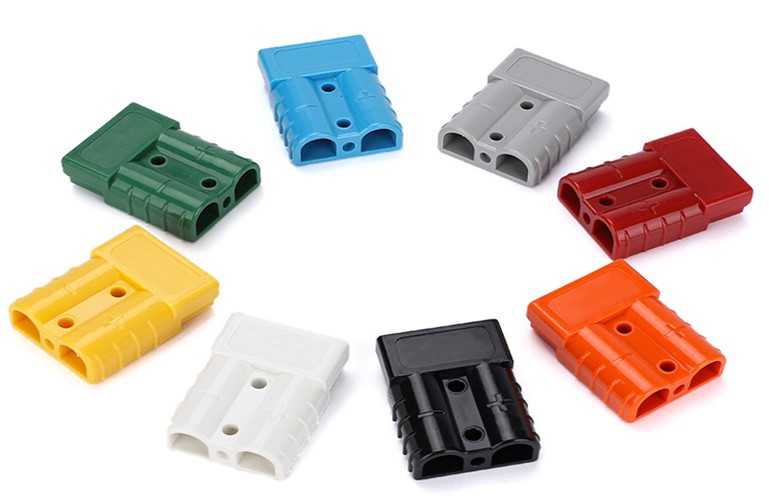
What Is a Battery Connector?
A battery connector is an electrical interface that links a power source (usually a battery) to a device, charging station, or power distribution unit. It enables the controlled flow of electrical current from the battery to the device, make it right optimal power delivery while preventing electrical faults or disconnections.
Battery connectors come in various shapes, ratings (like 30A, 50A), and materials, depending on their intended use. It also carries a UL 94 V-0 flame rating, which makes it good for high-safety environments.
Key Advantages of Using a Battery Connector
A battery connector isn't just a simple plug. Here are some of the top advantages of using modern connectors:
Modern battery connectors, particularly battery terminal connectors, are designed for a tight, secure fit. This reduces the risk of accidental disconnection during operation or transit-an essential feature in applications like forklifts, electric bikes, and backup power systems.
As illustrated, genderless battery terminal connectors can be paired interchangeably. This not only simplifies assembly but also reduces inventory management complexity. Technicians do not need to worry about matching male and female ends-just the same specification and color.
The 50A and 600V ratings of products like the SH-50A make them suitable for demanding tasks. From solar battery banks to high-powered motors, these connectors are engineered to handle serious loads safely.
PC shell materials and modular construction mean the connectors can be easily snapped together or replaced without specialized tools. This leads to faster maintenance cycles and reduced downtime.
With flame-retardant materials and corrosion-resistant metal contacts, battery connector products are made for longevity-even in harsh environments such as marine, industrial, or off-grid power systems.
How to Replace a Battery Connector
Before touching any wiring or terminals, disconnect the battery from any active system. Safety is key.
Take note of the connector's specifications-voltage, current rating, size, and color-to ensure compatibility with the replacement connector.
Ensure you are using a matching replacement, such as the SH-50 battery connector shown.
Use a wire cutter or unscrew the terminals if your system uses screw-type battery terminal connectors. Strip the wire ends for a clean copper exposure.
Insert the stripped wire ends into the silver-placed copper contacts.Depending on the model, you may need to crimp or solder the connection.
Before going fully operational, do a continuity test or a voltage check to make sure the battery connector is installed correctly.
Applications of Battery Terminal Connectors
Electric Vehicles: From e-bikes to forklifts, battery terminal connectors ensure safe and reliable power transfer.
Solar Systems: Used to connect solar batteries and inverters.
Industrial Power Tools: High-amperage connectors support heavy machinery with consistent power.
UPS Systems: Ensure critical backup systems switch easily in the event of an outage.
Conclusion
Replacing a battery connector is a straightforward yet key maintenance task that enhances device safety and performance. High-quality connectors offer ease of use, high-current capacity, and superior durability, rendering them indispensable for applications in electric vehicles, solar systems, and industrial tools.
High-quality battery terminal connectors offer ease of use, high-current capacity, and superior durability.Whether you're setting up a solar array, restoring a forklift battery system, or just doing preventive maintenance, choosing the necessary battery connector is essential for a reliable power connection.
As power demands grow and systems become more complex, investing in robust, flame-retardant, and interchangeable battery terminal connectors is a smart move-saving both time and resources in the long run.